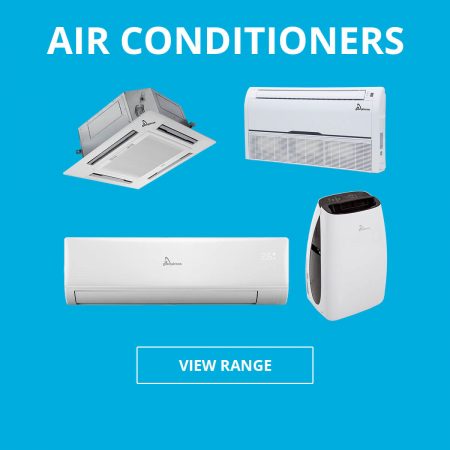This may be a surprise to many, but to cool the air in a room, air conditioners have to actually heat it. More precisely, heat is a by-product of their operational cycle. This exhaust prevents rapid air cooling, and therefore something needs to be done with it. The majority of portable air conditioners use a hose system to blow hot air out of the window. The most common design features a single vent and a single hose. Such models are cheaper and easier to install than double-hose counterparts. If you consider purchasing one of these devices, first you need to learn how they operate and what you can expect from them. In this post, we’re going to answer the question: “how does a single hose portable air conditioner work?” Read on to find out more.
Portable Air Conditioner Refrigeration Cycle
Whether your portable AC has one hose or two, it works like this:
- A fan sucks hot air inside.
- When this air passes through cooling coils, its temperature drops.
- Cooling coils are filled with refrigerant fluid that turns into gas as an AC performs its cooling function.
- Cool air then enters the room.
- A compressor connected to condenser coins turns refrigerant gas back into fluid.
- As the compressor works, it produces a lot of heat. Together with condensate that forms on cooling coins, it’s removed through an exhaust vent.
- The cycle repeats over and over again.
It goes without saying that hot exhaust shouldn’t get into the room. In the overwhelming majority of cases, it’s taken outside through the vent and a hose attached to it. This hose is connected with either a window or a wall. Because an AC is portable, you can move it around your house and connect to any sliding window with an expandable window unit.
Distinctive Features of Single-Hose Portable ACs
Single hose portable ACs are perfect for relatively small rooms. If you need to cool down a larger area, their power might not be enough. When an AC expels hot exhaust and condensate out, it literally sucks the air out of the room. After a while, your room will start developing low pressure. You are unlikely to feel any negative effect of it in your head, however, this means that your air conditioned room will try to suck air from the outside through any possible cracks and gaps as well as from other rooms to even out the pressure. As a result, negative pressure will pull in hot air from everywhere. To actually stay cool, you will need to seal the window and shut the door tight.
Pros and Cons of a Single Hose Air Conditioner
Single-hose air conditioners are portability itself. You can install them just in a few minutes. You can quickly disconnect and reinstall them in another room. They are fairly compact and quiet since they have only one fan (double hose units have two fans, therefore they produce twice as much noise). Finally, single hose portable ACs are budget-friendly solutions because their initial price is on the lower side and they consume less energy.
And now it’s time to look at the fly in the ointment. Due to the lower pressure effect and its ability to draw in air from other places, single hose devices will have more hot air to deal with. This means they require more time to actually cool the air down. They are not suitable for large areas or super hot rooms (such as server facilities). In these cases, double hose models gain the upper hand.
